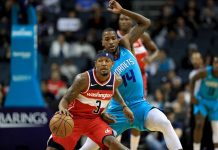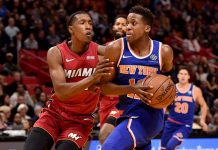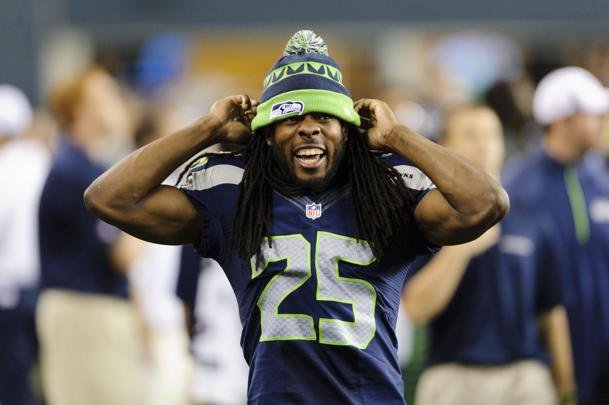Before Alvin Gentry was fired by the Phoenix Suns, there had been three major — sudden, shocking, impulse-driven — coaching changes in the NBA this season that all seem to need explanation.
Mike Brown (Los Angeles) gone five games into the season; Avery Johnson (Brooklyn) gone the day after Christmas, 28 games into the season; Scott Skiles (Milwaukee) gone 32 games in, when his team fell to .500 for the fourth time this season. Gentry lasted 41 games.
And somehow, there have been no Phil Jackson (or Stan Van Gundy) sightings.
Since the firings, the Lakers, Nets and Bucks have gone three different directions. The Nets are 9-2 post-AJ, the Lakers are 16-18 since firing Brown, the Bucks 3-3 since Skiles was asked to return the keys. One coach is catching hell (Mike D’Antoni with the Lakers), one is so under-the-radar that hardly anyone knows he is a current head coach of an NBA team (Jim Boylan with the Bucks), one is on pace to have a statue built in his likeness outside the Barclays Center (P.J. Carlesimo with the Nets). With the Suns, it’s too early to tell.
Each team had different reasons for enforcing a head coaching change when it did. The results of each are so all over the place that it’s hard to determine if there is a right or wrong in what each team did, the way the teams went about doing it and/or the arguable timing of them all.
No rhyme, less reason. Nothing seems to fit when the immediate results are so random and varied. Owners flip a coin, hoping it’ll land on the opposite side of their current results.
Just two weeks ago, we watched the NFL fire seven coaches on Black Monday. The NBA? Owners don’t have patience like that. They embrace change in a different way. They react with quickness. Regardless of how the firings are rationalized internally or justified publicly, two things are certain: Job security for an NBA coach is maybe the greatest oxymoron in sports, and there is no assurance that the immediate results under a new leader will give any team the answer it sought.
For instance, there were four coaching changes during the 2011-12 shortened season. Of those four, three of the coaches were retained and have not been pink-slipped. Yet.
Yet, there’s no telling if Randy Wittman in Washington, Keith Smart in Sacramento or Mike Woodson in New York (although he seems relatively safe, nothing is guaranteed if the Knicks fall out of the top four seeding in the East or the “Amar’e Experiment” doesn’t work out soon) were the right choices. There’s no telling if there would be any difference if the teams did what Orlando did when it rode the season out with the existing/sacrificial coach, dismissed him in the offseason, hired the guy the owner and organization “really” wanted (Jacque Vaughn) and began the new season fresh.
The Bulls waited until the offseason to hire Tom Thibodeau a few years ago, as did the Clippers with Vinny Del Negro and Golden State with Mark Jackson. Indiana did not with Frank Vogel. And all these teams are remarkably better than they were the day the current coaches took over.
Go figure.
In the NFL, going back a few years, Marty Schottenheimer (his first job) and Don Coryell (his second) replaced fired head coaches in the middle of a season, and their careers turned out well. In comparison, Jason Garrett took over the Cowboys in November 2010 when Jerry Jones fired Wade Phillips after a 1-7 start. Now the odds are, even after two 8-8 full seasons as Jerry’s puppet, Garrett might not make it to Black Monday next year.
In the NHL, Ken Hitchcock took over a 6-7-0 team in St. Louis last season and proceeded to finish 49-22-11 and first in the Central. Bruce Boudreau was on both ends of an owner’s midseason whims: fired in D.C. with a 12-9-1 record only to be hired by Anaheim and go 27-23-8 with a team that finished last in the Pacific, even after improving under him.
In MLB. In the English Premier League. In the National Rugby League. In any team sport at the pro level, the same theory-less theory holds true. The results prove to be the same: inconclusive. Same no rhyme. Same less reason.
So how do we judge and or generalize when it is a good/bad, appropriate/inexcusable, smart/incompetent time to fire/hire head coaches?
The best example of how (and why) there may never be an answer to this, especially in the NBA where the coaching carousel can get extreme and thoughtless, can be found in the head coaching history of Gregg Popovich in San Antonio.
He, too, was an interim coach who replaced Bob Hill 18 games into the 1996-97 season. (His was one of eight midseason coaching changes by seven teams.) Since then, Popovich has gone on to become the sensei of all active coaches. And he would be the perfect example of the upside to firing a coach during or somewhere in the middle of an NBA season if … at the time he wasn’t the GM and VP of basketball operations for the Spurs and he hadn’t appointed himself as head coach.
Despite owners’ certainty that a change on the bench will bring different results, flipping a coin often lands with the same ugly results staring them in the face. Heads or tails. And sometimes, because they limit their thinking to those two options, either this or that, they’re surprised when it lands on the coin’s narrow third surface, spinning on its edge.
Coaches in all sports come and go. Coaches in the NBA just seem to do so at an advanced pace.
When it comes to the revolving door at the core of most relationships between ownership and a head coach, how the coin will land after it stops spinning is too hard to guess. A few games midseason rarely determine — especially in the NBA — the good decision/bad decision outcome of a bad fire/new hire.
Or is it new fire/bad hire? Looking at the immediate results, I can’t tell if there’s even any difference.
25% Bonus via Western Union


















